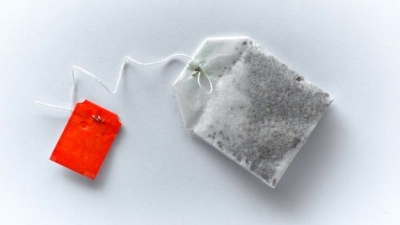
Every day in Britain alone, 150 million cups of tea are made from the tea bags – small paper bags packed with enough tea to give one cup when steeped in boiling water. The net like filter paper that forms the bank has holes big enough to let boiling water in, but small enough not to let any leaves escape. It is also strong enough not to break in a high speed tea-packing machine, or during handling in use – when dry or wet.
No ordinary paper could meet these exacting demands. Teabag paper is made from two strong fibres – manila hemp, a long natural fibre (used to make rope) for strength and thermoplastic fibres, to seal the bags. The two fibres are not woven together – they are laid down as a watery mixture in two separate layers. They form paper when the water drains away and the damp web remaining is squeezed dry-through rollers. This gives the paper and an irregular, web like structure with pores varying in size.
The paper goes through tea packing machine in a sandwich of two strips and the machine measures out the amount of tea on the lower strip. The bags are formed by heat sealing the sandwich together round the edges. The thermoplastic fibres melt to form the bond which stays strong when it solidifies again on cooling. It’s melting point is higher then 212°F (100ºC) – so the bag will not come apart when boiling water is poured over it.
Picture Credit : Google

